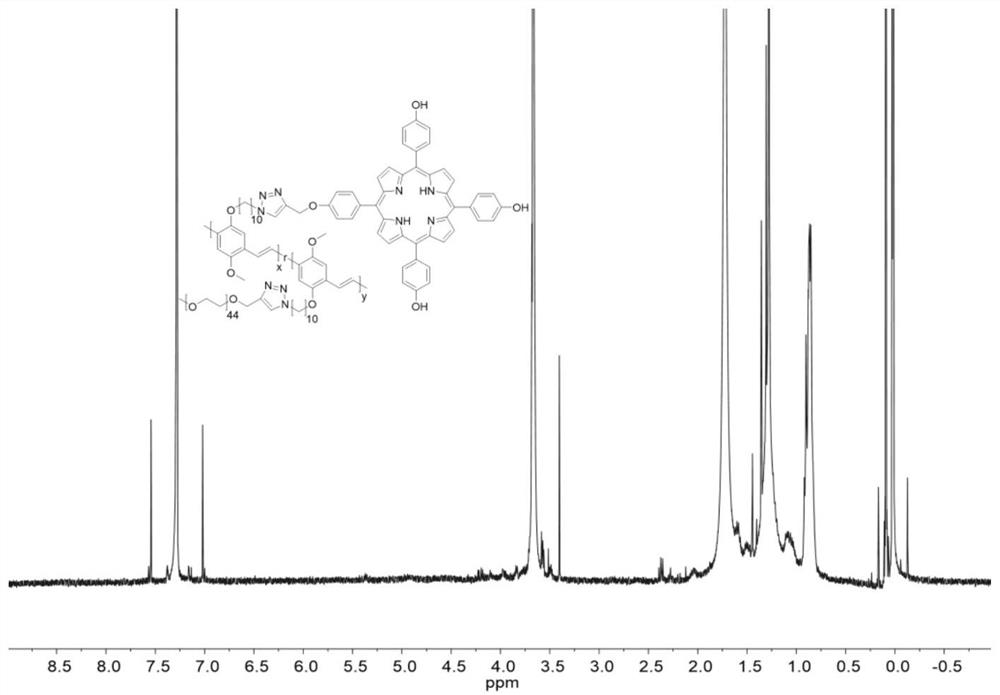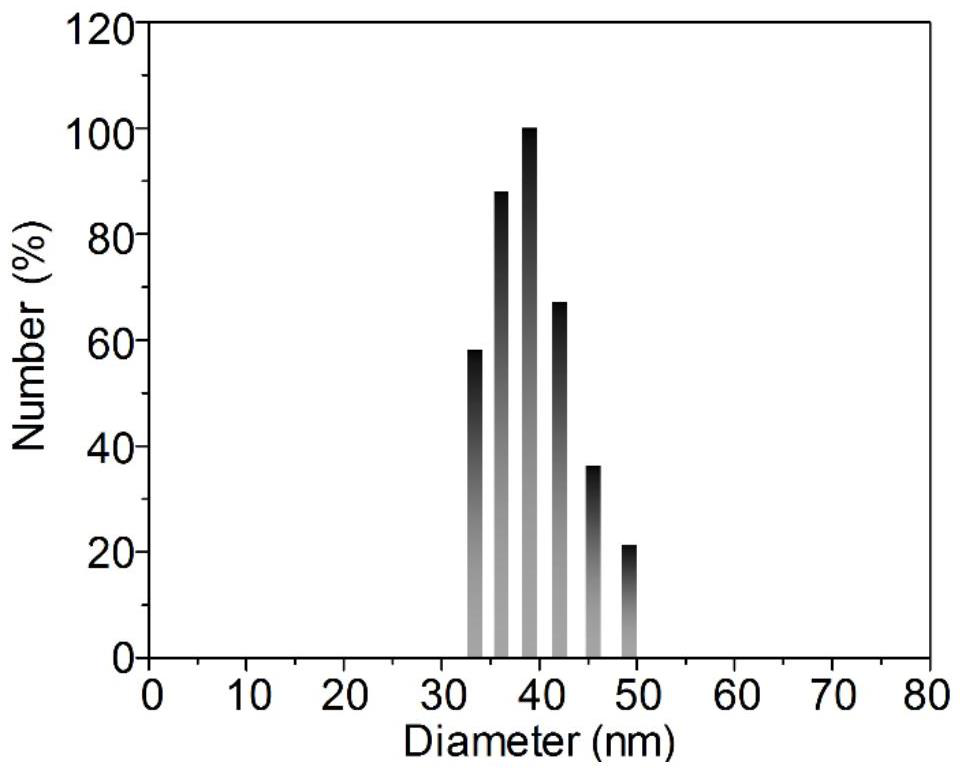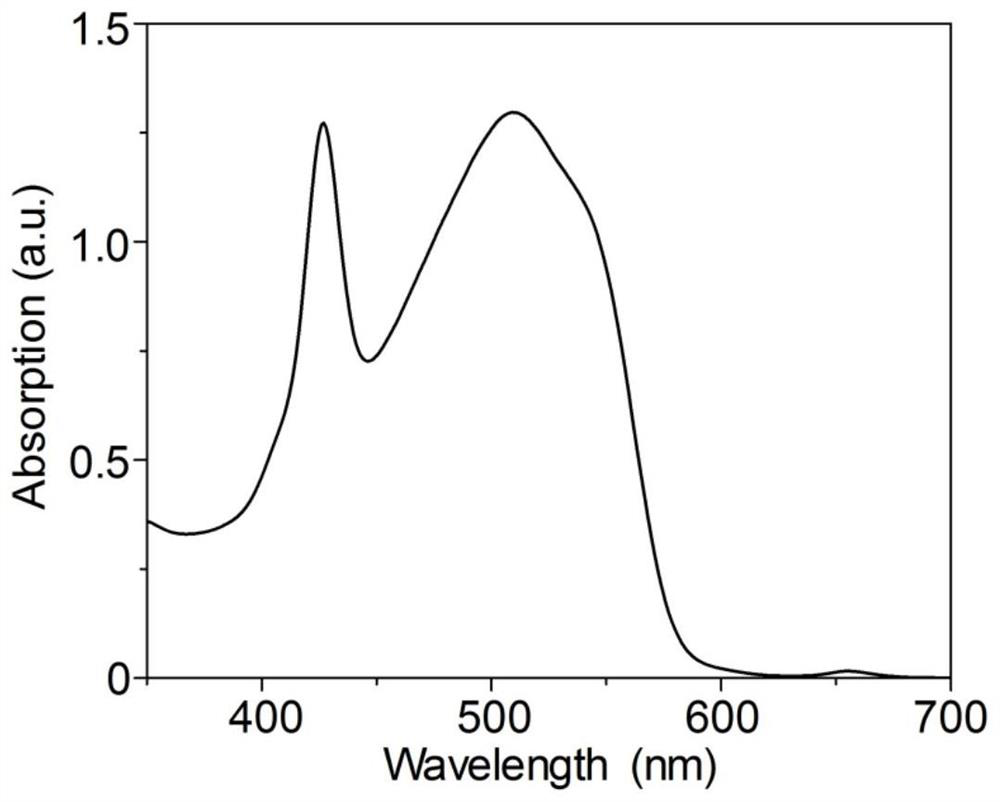Single-component near-infrared afterglow imaging nanoprobe and preparation method thereof
A nanoprobe, near-infrared technology, applied in chemical instruments and methods, climate sustainability, luminescent materials, etc., can solve the problems of easy dissociation of PPV-based probes, and achieve good stability and tumor enrichment ability. Effect
- Summary
- Abstract
- Description
- Claims
- Application Information
AI Technical Summary
Problems solved by technology
Method used
Image
Examples
Embodiment 1
[0037](1) Add 100mg of 5,10,15,20-tetrakis(4-hydroxyphenyl)porphyrin, 204mg of potassium carbonate and 18mL of dimethyl sulfoxide into a single-port reaction flask, seal the device, vacuumize and then fill with nitrogen Protection; Stir and activate at 50°C for 20min, then add 17μL of propyne bromide in toluene solution, stir and react at 50°C for 8h, after the reaction is completed, add 200mL deionized water to dilute the reaction mother liquor after the reaction system is cooled to room temperature, and use 50mL ethyl acetate Ester extracted the aqueous phase three times, collected the organic phase, added an appropriate amount of anhydrous sodium sulfate to dry and remove water for 12 hours, and removed the sodium sulfate solid and ethyl acetate after drying. The crude product was purified by silica gel chromatography. After concentrating the product, add an appropriate amount of hot ethyl acetate The solid of the dissolved product was saturated and settled in an appropriate...
Embodiment 2
[0048] (1) Add 100mg of 5,10,15,20-tetrakis(4-hydroxyphenyl)porphyrin, 190mg of sodium carbonate and 18mL of dimethyl sulfoxide into a single-port reaction flask, seal the device, vacuumize and then fill with nitrogen Protection, stirring and activation at 50°C for 20min, then adding 17μL of propyne bromide in toluene solution, stirring at 50°C for 8h, after the reaction was completed, after the reaction system was cooled to room temperature, 200mL of deionized water was added to dilute the reaction mother liquor, and 50mL of ethyl acetate was used to Extract the water phase three times, collect the organic phase, add an appropriate amount of anhydrous sodium sulfate to dry and remove water for 12 hours, remove the sodium sulfate solid and ethyl acetate after drying, purify the crude product through a silica gel column, concentrate the product, add an appropriate amount of hot ethyl acetate to dissolve The product solid reaches a saturated state, and settles in an appropriate a...
Embodiment 3
[0054] (1) Add 100 mg of 5,10,15,20-tetrakis(4-hydroxyphenyl)porphyrin, 200 μL of triethylamine and 18 mL of dimethyl sulfoxide into a single-port reaction flask, seal the device, vacuumize and then fill Under nitrogen protection, stir and activate at 50°C for 20min, then add 17μL toluene solution of propyne bromide, stir and react at 50°C for 8h, after the reaction is finished, wait for the reaction system to cool to room temperature, add 200mL deionized water to dilute the reaction mother liquor, and use 50mL ethyl acetate Ester extracted the aqueous phase three times, collected the organic phase, added an appropriate amount of anhydrous sodium sulfate to dry and remove water for 12 hours, and removed the sodium sulfate solid and ethyl acetate after drying. The crude product was purified by silica gel chromatography. After concentrating the product, add an appropriate amount of hot ethyl acetate The solid of the dissolved product reaches a saturated state, and settles in an a...
PUM
 Login to View More
Login to View More Abstract
Description
Claims
Application Information
 Login to View More
Login to View More - R&D
- Intellectual Property
- Life Sciences
- Materials
- Tech Scout
- Unparalleled Data Quality
- Higher Quality Content
- 60% Fewer Hallucinations
Browse by: Latest US Patents, China's latest patents, Technical Efficacy Thesaurus, Application Domain, Technology Topic, Popular Technical Reports.
© 2025 PatSnap. All rights reserved.Legal|Privacy policy|Modern Slavery Act Transparency Statement|Sitemap|About US| Contact US: help@patsnap.com



